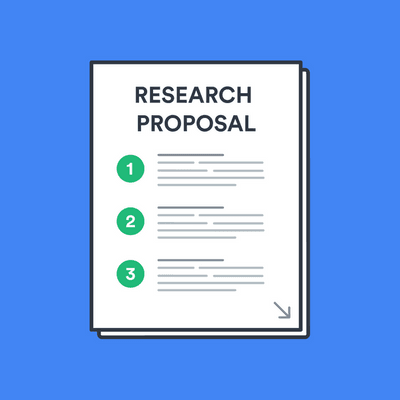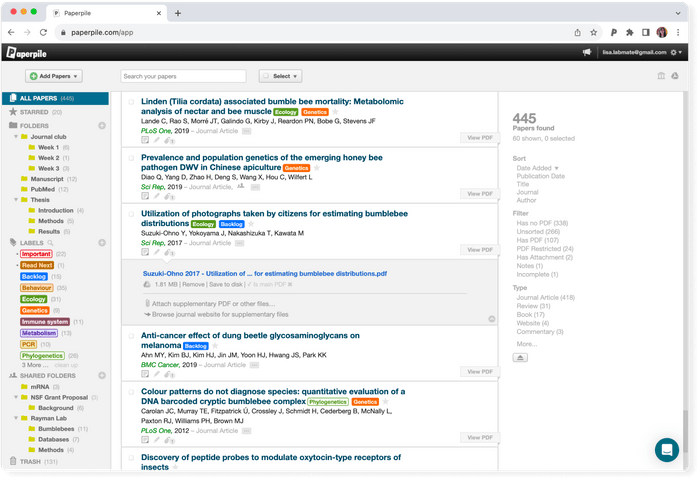How to write a research proposal

What is a research proposal?
If you’re in higher education, the term “research proposal” is something you’re likely to be familiar with. But what is it, exactly? You’ll normally come across the need to prepare a research proposal when you’re looking to secure Ph.D. funding.
When you’re trying to find someone to fund your Ph.D. research, a research proposal is essentially your “pitch.”
A research proposal is a concise and coherent summary of your proposed research.
You’ll need to set out the issues that are central to the topic area and how you intend to address them with your research. To do this, you’ll need to give the following:
- an outline of the general area of study within which your research falls
- an overview of how much is currently known about the topic
- a literature review that covers the recent scholarly debate or conversation around the topic
➡️ What is a literature review? Learn more in our guide.
What is the purpose of a research proposal?
Essentially, you are trying to persuade your institution that you and your project are worth investing their time and money into.
It is the opportunity for you to demonstrate that you have the aptitude for this level of research by showing that you can articulate complex ideas:
- clearly
- concisely
- critically
It also helps you to find the right supervisor to oversee your research. When you’re writing your research proposal, you should always have this in the back of your mind.
This is the document that potential supervisors will use in determining the legitimacy of your research and, consequently, whether they will invest in you or not. It is therefore incredibly important that you spend some time on getting it right.
How long should a research proposal be?
If your research proposal is for a bachelor’s or master’s degree, it may only be a few pages long. For a Ph.D., a proposal could be a pretty long document that spans a few dozen pages.
➡️ Research proposals are similar to grant proposals. Learn how to write a grant proposal in our guide.
What should be included in a research proposal?
When you’re writing your proposal, keep in mind its purpose and why you’re writing it. It, therefore, needs to clearly explain the relevance of your research and its context with other discussions on the topic. You need to then explain what approach you will take and why it is feasible.
Generally, your structure should look something like this:
- Title Page
- Introduction
- Literature Review
- Research Design
- Implications
- References
If you follow this structure, you’ll have a comprehensive and coherent proposal that looks and feels professional, without missing out on anything important. We’ll take a deep dive into each of these areas one by one next.
1. The Title page
The title page might vary slightly per your area of study but, as a general point, your title page should contain the following:
- The proposed title of your project
- Your name
- Your supervisor’s name
- The name of your institution and your particular department
2. Introduction
The introduction is crucial to your research proposal as it is your first opportunity to hook the reader in. A good introduction section will introduce your project and its relevance to the field of study.
You’ll want to use this space to demonstrate that you have carefully thought about how to present your project as interesting, original, and important research. A good place to start is by introducing the context of your research problem.
Think about answering these questions:
- What is it you want to research and why?
- How does this research relate to the respective field?
- How much is already known about this area?
- Who might find this research interesting?
- What are the key questions you aim to answer with your research?
- What will the findings of this project add to the topic area?
Your introduction aims to set yourself off on a great footing and illustrate to the reader that you are an expert in your field and that your project has a solid foundation in existing knowledge and theory.
3. Literature Review
The literature review section answers the question who else is talking about your proposed research topic.
You want to demonstrate that your research will contribute to conversations around the topic and that it will sit happily amongst experts in the field.
➡️ Read more about how to write a literature review.
There are lots of ways you can find relevant information for your literature review, including:
- Research relevant academic sources such as books and journals to find similar conversations around the topic.
- Read through abstracts and bibliographies of your academic sources to look for relevance and further additional resources without delving too deep into articles that are possibly not relevant to you.
- Watch out for heavily-cited works. This should help you to identify authoritative work that you need to read and document.
- Look for any research gaps, trends and patterns, common themes, debates, and contradictions.
- Consider any seminal studies on the topic area as it is likely anticipated that you will address these in your research proposal.
4. Research Design
This is where you get down to the real meat of your research proposal. It should be a discussion about the overall approach you plan on taking, and the practical steps you’ll follow in answering the research questions you’ve posed.
So what should you discuss here? Some of the key things you will need to discuss at this point are:
- What form will your research take? Is it qualitative/quantitative/mixed? Will your research be primary or secondary?
- What sources will you use? Who or what will you be studying as part of your research.
- Document your research method. How are you practically going to carry out your research? What tools will you need? What procedures will you use?
- Any practicality issues you foresee. Do you think there will be any obstacles to your anticipated timescale? What resources will you require in carrying out your research?
5. Implications
Your research design should also discuss the potential implications of your research. For example, are you looking to confirm an existing theory or develop a new one?
If you intend to create a basis for further research, you should describe this here.
It is important to explain fully what you want the outcome of your research to look like and what you want to achieve by it. This will help those reading your research proposal to decide if it’s something the field needs and wants, and ultimately whether they will support you with it.
6. Reference List
When you reach the end of your research proposal, you’ll have to compile a list of references for everything you’ve cited above. Ideally, you should keep track of everything from the beginning. Otherwise, this could be a mammoth and pretty laborious task to do.
Consider using a reference manager like Paperpile to format and organize your citations. Paperpile allows you to organize and save your citations for later use and cite them in thousands of citation styles directly in Google Docs, Microsoft Word, or LaTeX.

Your project may also require you to have a timeline, depending on the budget you are requesting. If you need one, you should include it here and explain both the timeline and the budget you need, documenting what should be done at each stage of the research and how much of the budget this will use.
Revision
This is the final step, but not one to be missed. You should make sure that you edit and proofread your document so that you can be sure there are no mistakes.
A good idea is to have another person proofread the document for you so that you get a fresh pair of eyes on it. You can even have a professional proofreader do this for you.
This is an important document and you don’t want spelling or grammatical mistakes to get in the way of you and your reader.
➡️ Working on a research proposal for a thesis? Take a look at our guide on how to come up with a topic for your thesis.
Frequently Asked Questions about writing a research proposal
💅🏾 What does a research proposal look like?
A research proposal is a concise and coherent summary of your proposed research. Generally, your research proposal will have a title page, introduction, literature review section, a section about research design and explaining the implications of your research, and a reference list.
😧 What are the characteristics of a good research proposal?
A good research proposal is concise and coherent. It has a clear purpose, clearly explains the relevance of your research and its context with other discussions on the topic. A good research proposal explains what approach you will take and why it is feasible.
😰 Why do we need a research proposal?
You need a research proposal to persuade your institution that you and your project are worth investing their time and money into. It is your opportunity to demonstrate your aptitude for this level or research by showing that you can articulate complex ideas clearly, concisely, and critically.
😕 How do you define research proposal?
A research proposal is essentially your "pitch" when you're trying to find someone to fund your PhD. It is a clear and concise summary of your proposed research. It gives an outline of the general area of study within which your research falls, it elaborates how much is currently known about the topic, and it highlights any recent debate or conversation around the topic by other academics.
📋 How long is a research proposal?
The general answer is: as long as it needs to be to cover everything. The length of your research proposal depends on the requirements from the institution that you are applying to. Make sure to carefully read all the instructions given, and if this specific information is not provided, you can always ask.


